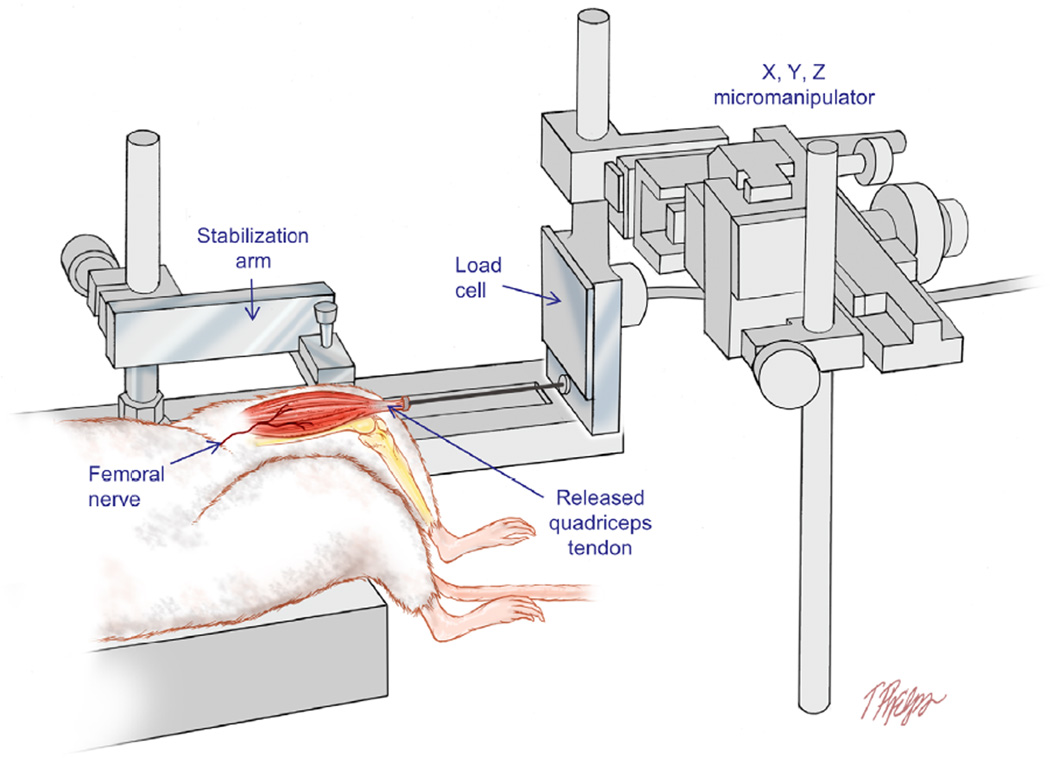Figure 5. In situ apparatus.
The load cell is mounted to a micromanipulator so that the quadriceps can be adjusted to resting length and aligned properly (a straight line of pull between the origin and insertion of the muscle and the load cell) in the X, Y, and Z directions. The distal tendon of the quadriceps is attached to the load cell and single twitches (1 ms duration) are induced at different muscle lengths (thus a length-tension, or L-T, curve) in order to determine Lo. A maximal tetanic contraction is obtained to determine maximal contractile tension (Po). Maximal tetanic contractions can be performed repeatedly over time with the final tension expressed as percentage of Po, providing an index of fatigue at a desired point in time.

